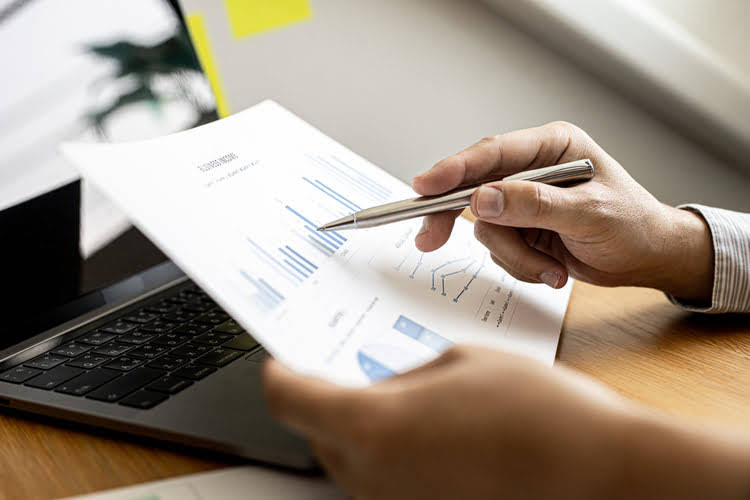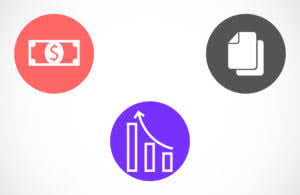
Read further to understand Period Costs, the factors surrounding their meaning, different types, advantages, and examples. Managing administrative expenses effectively involves optimizing processes, reducing waste, and ensuring that resources are allocated efficiently to support the organization’s goals and objectives. Managing fixed period costs involves careful budgeting and planning to ensure that the business can cover these expenses even during periods of low revenue or economic downturns. The product costs are the costs incurred by a company directly related to the production of goods. These are the ongoing costs necessary to run a business and are immediately subtracted from revenues to determine a company’s profit.
Why is separating historical, current, and pre-determined expenses in period cost analysis important?
Product costs are recognized as expenses when the corresponding products are sold, typically as part of the cost of goods sold. In contrast, period costs are expensed in the period in which they are incurred, regardless of when the products or services are sold. Period Costs are typically classified as selling, general, and administrative expenses (SG&A) on the income statement. Examples include salaries and wages, rent, utilities, marketing expenses, and depreciation. Analyzing trends in Period Costs allows stakeholders to identify cost-saving opportunities, assess cost management effectiveness, and evaluate overall financial performance.

Resources
- On the other hand, a company that does not produce goods or does not carry inventory of any kind will not have any product costs to report on its financial statements.
- This information can then be used to assess the potential profitability of the expansion and make an informed decision on whether to proceed or not.
- In addition to categorizing costs as manufacturing and nonmanufacturing, they can also be categorized as either product costs or period costs.
- The direct materials, direct labor and manufacturing overhead costs incurred to manufacture these 500 units would be initially recorded as inventory (i.e., an asset).
By evaluating profitability and making informed decisions based on these cost categories, companies can optimize their resources and drive sustainable growth. Understanding the different of period costs allows businesses to analyze their financial performance and make informed decisions. By evaluating selling and marketing expenses, administrative expenses, and research and development costs, organizations can gain insights into their profitability and allocate resources effectively. In order to effectively analyze and understand a company’s financial performance, it is crucial to identify and categorize the different of examples of period costs period costs. Period costs are expenses that are not directly related to the production of goods or services, but rather incurred over a specific time period. These costs are considered operating expenses and are deducted from revenue to determine net profit.

AccountingTools
Out of these 500 units manufactured, the company sells only 300 units during the year 2022 and 200 unsold units remain in ending inventory. The direct materials, direct labor and manufacturing overhead costs incurred to manufacture these 500 units would be initially recorded as inventory (i.e., an asset). The cost of 300 units would be transferred to cost of goods sold during the year 2022 which would appear on the income statement of 2022. The remaining inventory of 200 units would not be transferred to cost of good sold in 2022 but would be listed as current asset in the company’s year-end balance sheet.
- This includes expenses related to creating and running advertisements on various platforms such as television, radio, print media, and online channels.
- Period costs, also known as operating expenses, are expenses that are not directly tied to the production of goods or services.
- Whether you’re a business owner, manager, or investor, grasping the concept of Period Costs is essential for making informed decisions, optimizing resources, and ultimately achieving financial success.
- Managing mixed period costs requires a nuanced approach, balancing the fixed and variable components to ensure cost-effectiveness and efficiency.
- From paying employee salaries to covering utility bills and marketing expenses, Period Costs encompass a wide range of expenditures necessary for day-to-day business operations.
- Understanding and analyzing period costs is important for evaluating profitability and making informed business decisions.
- Advertising and promotion expenses are a type of period cost incurred by businesses to create awareness and promote their products or services to their target audience.
- By grasping the distinction between Period Costs and Product Costs, businesses can accurately assess their expenses and make informed decisions to improve profitability.
- Recognizing the importance of Period Costs in financial analysis allows businesses to make informed decisions, optimize performance, and achieve long-term success and sustainability.
Dynamic platform dedicated to empowering individuals with the knowledge and tools needed to make informed investment decisions and build wealth over time. Led by editor-in-chief, Kimberly Zhang, our editorial staff works hard to make each piece of content is to the highest standards. Upgrade to one of our premium templates when needed and take your work to the next level.

Period costs can be further classified into different categories based on their nature and purpose. Some common of period costs include selling and marketing expenses, administrative expenses, and research and development costs. The Restaurant Cash Flow Management timing of cost recognition is a key distinction between period costs and product costs.
These unsold units would continue to be treated as asset until they are sold in a following year and their cost transferred from inventory account to cost of goods sold account. Understanding Period Costs is crucial for any business looking to navigate the complex landscape of financial management. By grasping the distinction between Period Costs and Product Costs, businesses can accurately assess their expenses and make informed decisions to improve profitability. From administrative and selling expenses to marketing costs and depreciation, every Period Cost plays a role in shaping a company’s financial health. Period costs are not tied to a product or the cost of inventory like product costs are.
- Now that we have explored the definition, explanation, and examples of period costs, let’s delve into the of period costs in the next section.
- For example, a company will deduct expenses such as sales costs, overhead costs, rent, or marketing expenses from its total income to derive its net income.
- By using TranZact’s inventory and period costs calculator tools, businesses can manage the challenges of financial management.
- Out of these 500 units manufactured, the company sells only 300 units during the year 2022 and 200 unsold units remain in ending inventory.
- CFI is the global institution behind the financial modeling and valuation analyst FMVA® Designation.
- In other words, they are expensed in the period incurred and appear on the income statement.
In addition, knowing and managing capacity retained earnings balance sheet costs provides a key advantage for companies looking to improve their financial decision-making processes. Understanding the of period costs is crucial for businesses to accurately analyze their financial performance. By identifying and categorizing these costs, organizations can gain insights into their profitability and make informed decisions. However, managing Period Costs effectively indirectly impacts the balance sheet by influencing cash flow, liquidity, and profitability. By controlling Period Costs and optimizing spending, businesses can improve their bottom line profitability, increase cash reserves, and enhance overall financial stability.

How to Identify a Period Cost
R&D plays a crucial role in innovation and competitiveness, allowing companies to stay ahead in the market by developing new technologies, improving existing products, and exploring new markets. Investing in selling and marketing activities is crucial for businesses to reach their target market and drive sales. By analyzing and monitoring these expenses, companies can assess the effectiveness of their marketing strategies and make adjustments as needed. Managing mixed period costs requires a nuanced approach, balancing the fixed and variable components to ensure cost-effectiveness and efficiency. Analyzing historical data and trends can help businesses anticipate fluctuations in mixed costs and make informed decisions to control expenses.
